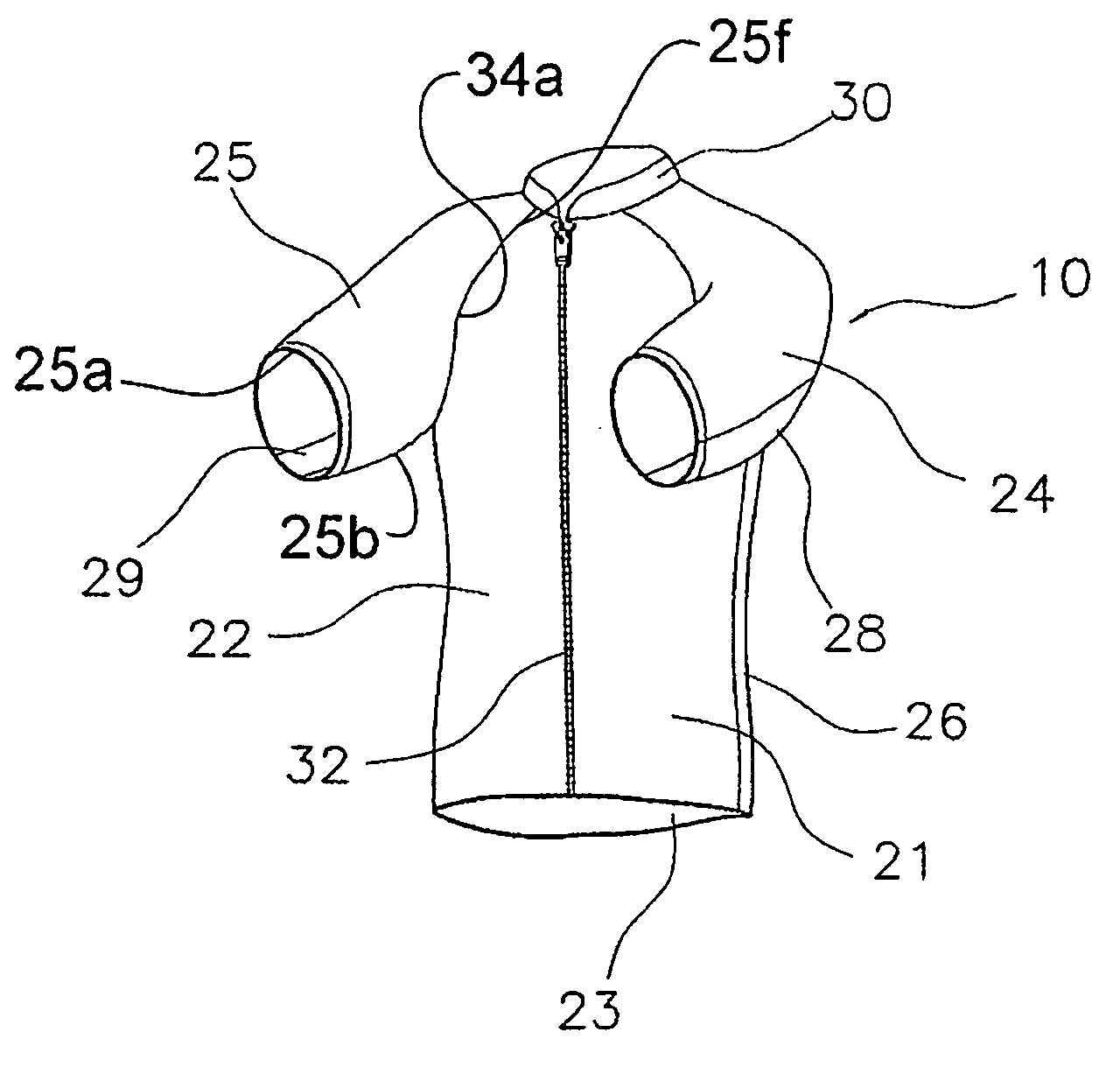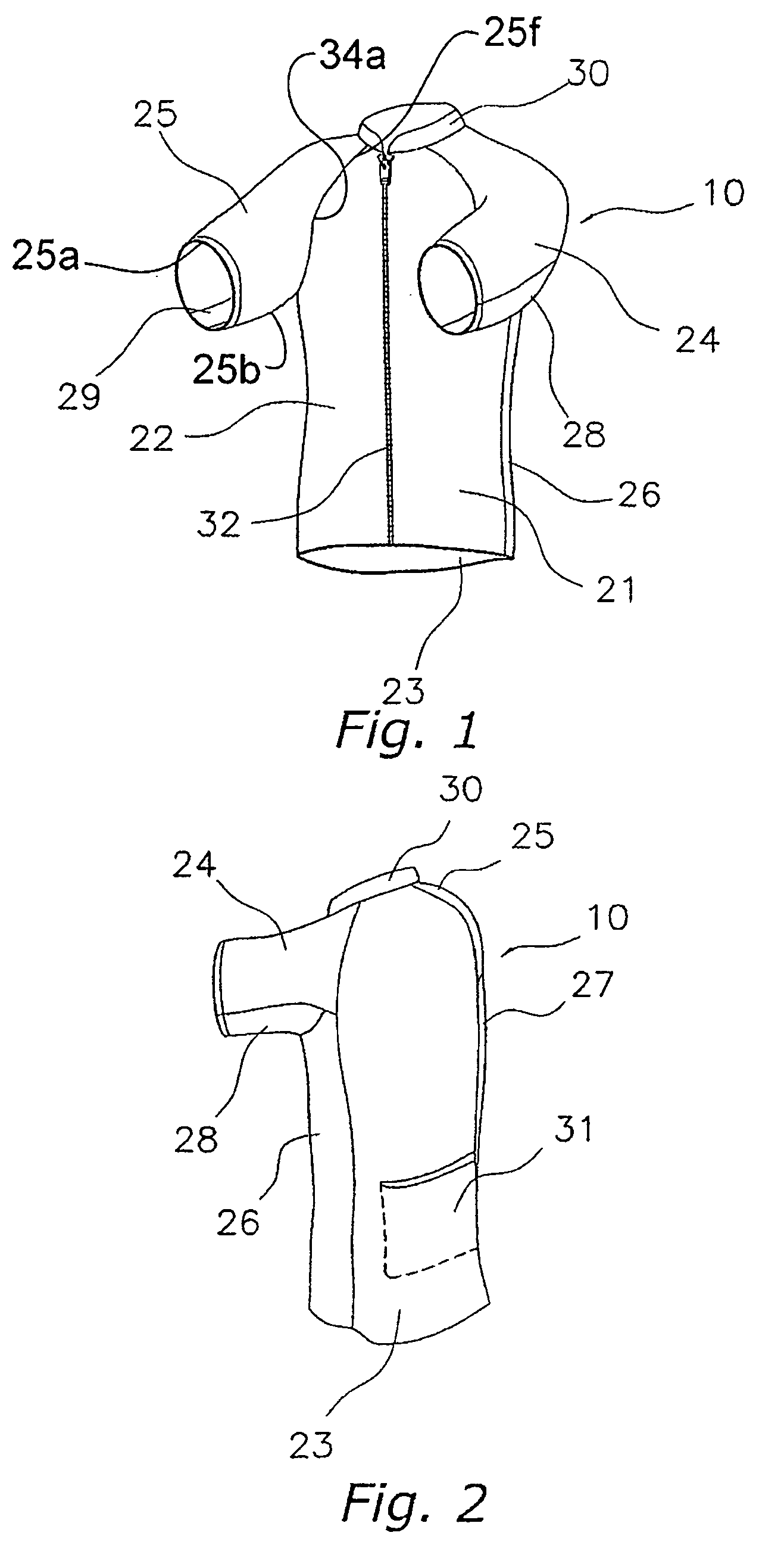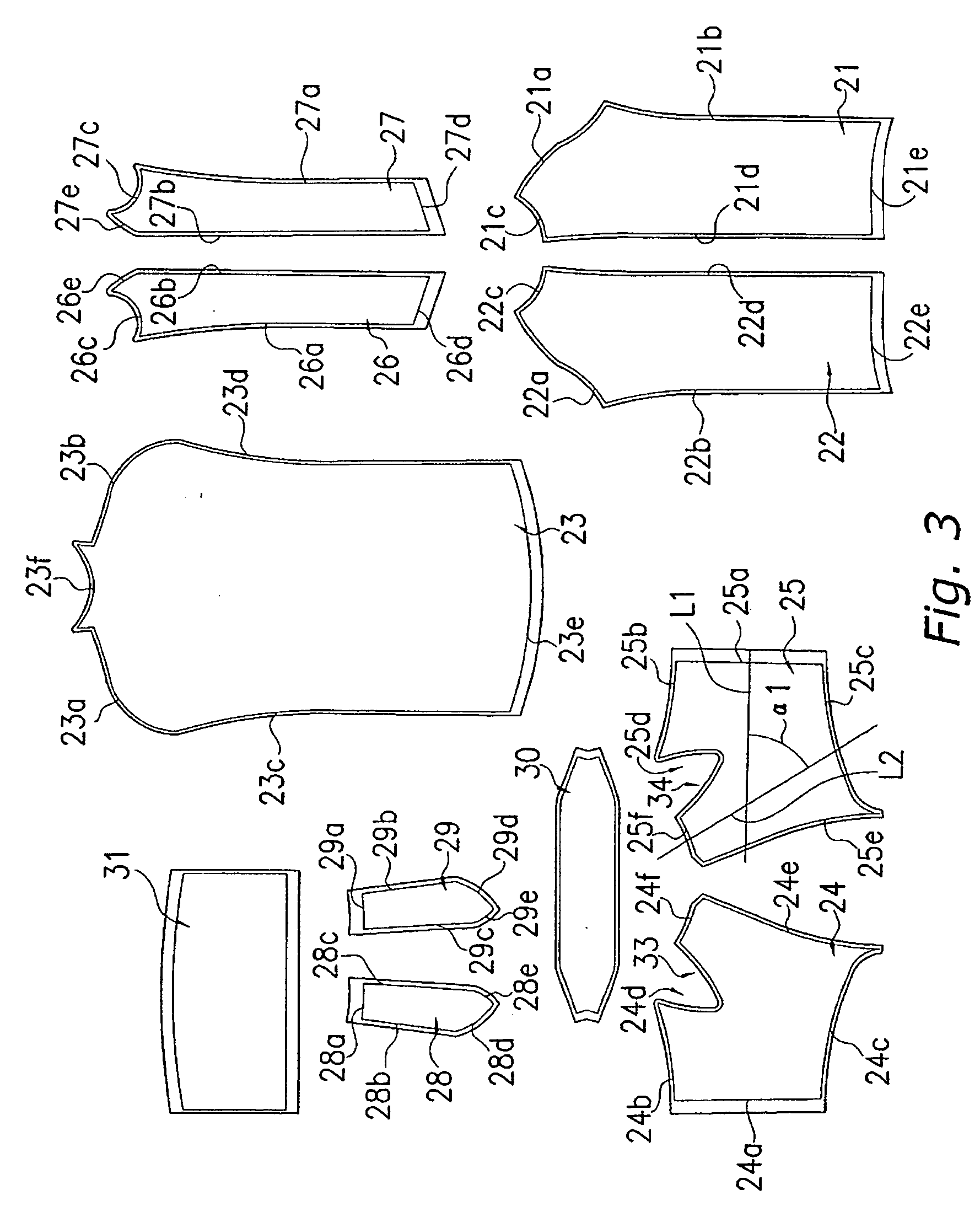[0011] One object of the present invention is to provide bicycle apparel with improved wind resistance characteristics.
[0012] Another object of the present invention is to improve the comfort level of a cyclist wearing bicycle apparel with the cyclist in a riding posture holding the handlebar of a bicycle.
[0014] The bicycle jersey of the present invention provides a greater level of comfort to the cyclist and reduced wind resistance because of the configuration and dimensions of the sleeve panel. The first angle formed between the first line and the second line in each of the sleeve panels is preferably between 30 and 90 degrees. The angle is possible in part due to the V-shaped cutout established on a first suture portion and is a suture point with the front of the sleeve panel. The first angle is located at the intersection of the first and the second lines. Specifically the first angle that is between 30 and 90 degrees and is formed where a sleeve line (the first line) and a shoulder line (the second line) intersect. The first angle is wider than in conventional jerseys. As a result, the entire sleeve of the assembled bicycle jersey extends forward and upward with respect to the
vertical orientation of the jersey. More specifically, the sleeve is angled toward the front of the bicycle jersey by the size of the first angle. Additionally, by setting a V-shaped
cut part and suturing it to the
front panel, the sleeve edge portion faces forward and extends in front beyond a
vertical plane coinciding with the front most areas of the
front panel. As a consequence, since the sleeve edge portion faces forward, the bicycle jersey of the present invention conforms to the
torso and arm orientation of a cyclist in a riding posture riding a bicycle and gripping the handlebar with both hands. The cyclist is able to maintain the riding posture with the bicycle jersey conforming to his riding posture since the sleeves and
torso sections of the bicycle jersey have an overall shape that mimics the cyclists riding posture. The cyclist's arms and shoulders are fitted more comfortably within the bicycle jersey. Rucks, wrinkles and folds are less likely to form in the front and side of areas around the cyclist's shoulders. Therefore, the comfort level of the cyclist is improved, and air resistance is reduced.
[0017] In another aspect of the invention, a pair of left and right side members are sutured in place between respective first front-rear mounting portions of the front panels and the second front-rear mounting portion of the rear panel. By including a pair of left and right side members, the bicycle jersey more comfortably fits the a
human body, in particular a cyclist in the riding posture. Air resistance is reduced by
elimination of rucks, folds and wrinkles and the comfort level of the cyclist in the riding posture is improved.
[0018] In yet another aspect of the present invention, a pair of left and right bottom sleeve panels are sutured between the first and second sleeve forming portions of respective sleeve panels. Inclusion of the pair of the left and right bottom sleeve members makes it easier to conform the sleeve panel of the bicycle jersey to the upper arm of a cyclist in the riding posture. Air resistance is reduced by
elimination of rucks, folds and wrinkles and the comfort level of the cyclist in the riding posture is improved.
[0019] According to the present invention, by adjusting the first angle at the intersection of the first and second lines, specifically between 30 and 90 degrees where the shoulder and the sleeve intersect, the angle is larger than the corresponding angle in conventional jerseys. As a result, the entire sleeve part extends forward from a front
vertical plane defined by the front of the
torso area of the bicycle jersey. In addition, by adjusting the V-shaped cutout and suturing it with the
front panel, the sleeve portion faces outward and of a torso section of the bicycle jersey. As a consequence, the sleeve portion extends forward of the front of the bicycle jersey, in particular when a cyclist rides a bicycle and holds the handlebar with both hands. The cyclist's arms extend toward the front of the bicycle jersey and since the bicycle jersey conforms to the cyclists shape, the back panel and areas around the cyclist's shoulder are snug but not tight. Rucks, folds and wrinkles are less likely to appear in the sleeve panel at the front and side areas around the cyclist's shoulder. Therefore, air resistance is reduced by
elimination of rucks, folds and wrinkles and the comfort level of the cyclist in the riding posture is improved.
 Login to View More
Login to View More  Login to View More
Login to View More 


